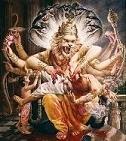
Migraine headaches tend to first appear between the ages of 10 and 45. Sometimes they may begin later in life.
Migraines occur more often in women than men,
Migraines may run in families.
Some women, but not all, may have fewer migraines when they are pregnant.
Certain foods and preservatives in foods may trigger migraines in some people. Food-related triggers may include:
Any processed, fermented, pickled, or marinated foods
Baked goods
Chocolate
Dairy products
Foods containing monosodium glutamate (MSG)
Baked goods
Chocolate
Dairy products
Foods containing monosodium glutamate (MSG)
Foods containing tyramine, which includes red wine, aged cheese, smoked fish, chicken livers, figs, and certain beans
Fruits (avocado, banana, citrus fruit)
Meats containing nitrates (bacon, hot dogs, salami, cured meats)
Nuts
Onions
Peanut butter
This list may not include all triggers.
Vision disturbances, or aura, are considered a "warning sign" that a migraine is coming. The aura occurs in both eyes and may involve any or all of the following:
A temporary blind spot
Blurred vision
Eye pain
Seeing stars or zigzag lines
Tunnel vision
Not every person with migraines has an aura. Those who do usually develop one about 10 - 15 minutes before the headache. However, it may occur just a few minutes to 24 hours beforehand. A headache may not always follow an aura.
Migraine headaches can be dull or severe. The pain may be felt behind the eye or in the back of the head and neck. For many patients, the headaches start on the same side each time. The headaches usually:
Feel throbbing, pounding, or pulsating
Are worse on one side of the head
Start as a dull ache and get worse within minutes to hours
Last 6 to 48 hours
Other symptoms that may occur with the headache include:
Chills
Increased urination
Fatigue
Loss of appetite
Nausea and vomiting
Numbness, tingling, or weakness
Problems concentrating, trouble finding words
Sensitivity to light or sound
Sweating
Symptoms may linger even after the migraine has gone away. Patients with migraine sometimes call this a migraine "hangover." Symptoms can include:
Feeling mentally dull, like your thinking is not clear or sharp
Increased need for sleep
Neck pain
Signs and tests
Your doctor can diagnose this type of headache by asking questions about your symptoms and family history of migraines. A complete physical exam will be done to determine if your headaches are due to muscle tension, sinus problems, or a serious brain disorder.
There is no specific test to prove that your headache is actually a migraine. However, your doctor may order a brain MRI or CT scan if you have never had one before or if you have unusual symptoms with your migraine, including weakness, memory problems, or loss of alertness.
An EEG may be needed to rule out seizures. A lumbar puncture (spinal tap) might be done.
Treatment -
There is no specific cure for migraine headaches. The goal is to prevent symptoms by avoiding or changing your triggers.
A good way to identify triggers is to keep a headache diary. Write down:
When your headaches occur
How severe they are
What you've eaten
How much sleep you had
Other symptoms
Other possible factors (women should note where they are in their menstrual cycle)
For example, the diary may reveal that your headaches tend to occur more often on days when you wake up earlier than usual. Changing your sleep schedule may result in fewer migraine attacks.
When you do get migraine symptoms, try to treat them right away. The headache may be less severe. When migraine symptoms begin:
Drink water to avoid dehydration, especially if you have vomited
Rest in a quiet, darkened room
Place a cool cloth on your head
Many different medications are available for people with migraines. Medicines are used to:
Reduce the number of attacks
Stop the migraine once early symptoms occur
Treat the pain and other symptoms.
Prevention
Understanding your headache triggers can help you avoid foods and situations that cause your migraines. Keep a headache diary to help identify the source or trigger of your symptoms. Then modify your environment or habits to avoid future headaches.
Other tips for preventing migraines include:
Avoid smoking
Avoid alcohol
Avoid artificial sweeteners and other known food-related triggers
Get regular exercise
Get plenty of sleep each night
Learn to relax and reduce stress -- some patients have found that biofeedback and self-hypnosis helps reduce the number of migraine attacks







0 comments:
एक टिप्पणी भेजें